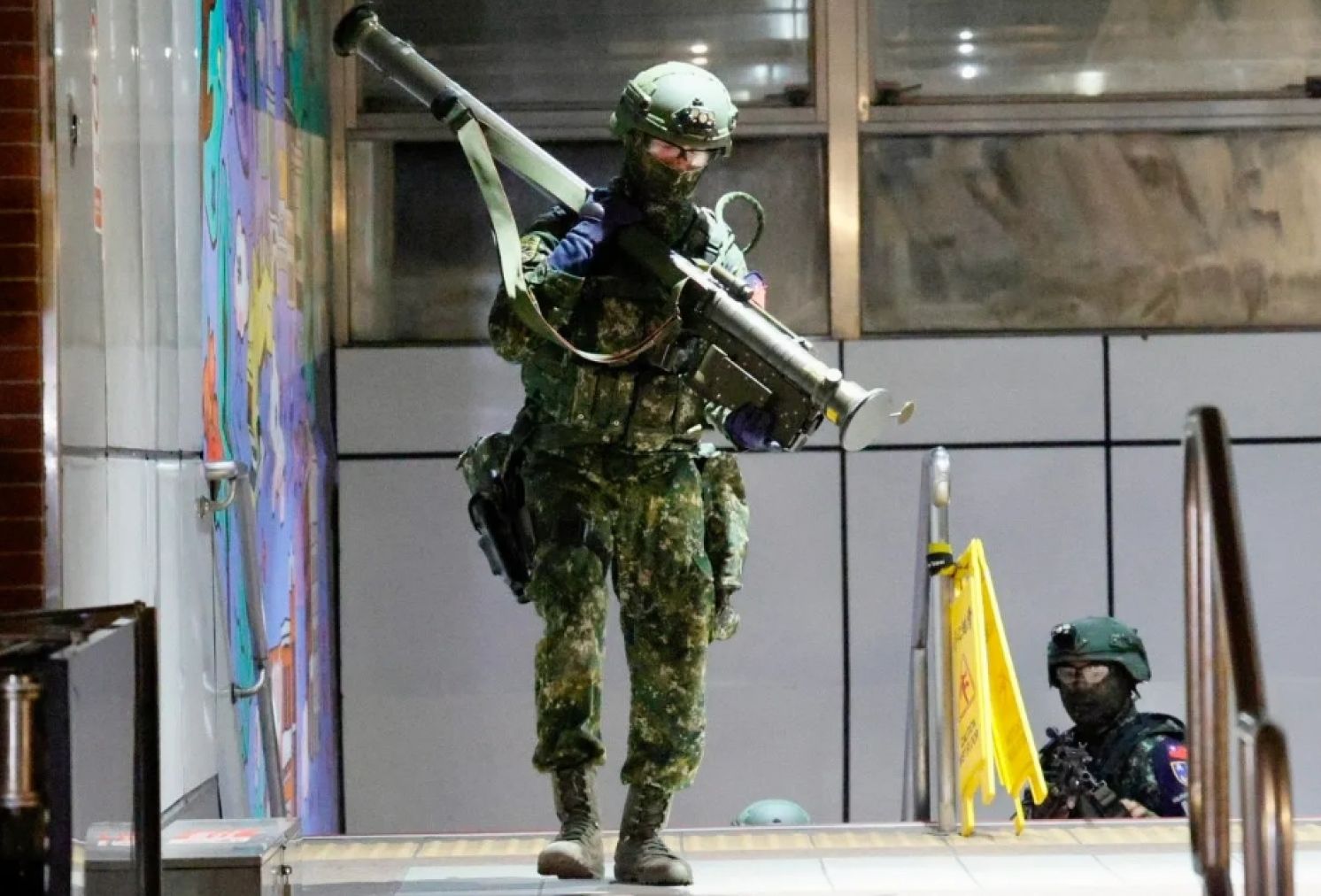
U.S. Guiding Taiwan's Military Exercises, Replicating Ukraine's Urban Warfare Model
The Storm Media Editorial, July 18, 2025
As Taiwan’s Han Kuang No. 41 military exercises draw to a close, the northern region on July 17 conducted an urban resilience drill, featuring a mock missile strike that triggered a nationwide mobile phone alert at 1:30 PM, warning: “Enemy missile attack on northern Taiwan, seek shelter immediately.” Broadcast footage showed inspection teams—including U.S. personnel—entering metro stations, district offices, and shopping centers.
This year’s Han Kuang exercise, the longest in its history at 10 days and nine nights, has stood out for fostering an unusually strong public sense of imminent conflict. That “sense of war” stems from the drill’s shift into prolonged warfare and deep defense scenarios. According to the Ministry of National Defense, this phase emphasizes the mobilization of civilian resources to stall an imaginary amphibious enemy landing, aiming to weaken enemy forces through civil-military cooperation while awaiting international assistance.
The scenes were striking: camouflaged military vehicles rolling through city streets, military police carrying Stinger missiles in the Taipei Metro, and howitzers set up on elementary school playgrounds.
Such imagery reflects the growing alignment with U.S.-backed “asymmetric warfare” strategies for Taiwan, which increasingly feature “urban warfare” and “close-quarter combat” in political and media discourse across Taipei and Washington. In February 2023, an article titled “Win the Urban War in Taiwan” published by the U.S. Naval Institute advocated for the United States to promote urban warfare readiness in Taiwan. Former U.S. Secretary of Defense Mark Esper, during a 2022 visit, openly called for a “whole-of-society” defense posture in Taiwan—regardless of gender.
The incorporation of “urban resilience” into the Han Kuang drills signals that the ruling party has formally accepted the U.S. strategic vision of urban warfare. If war were to erupt in the Taiwan Strait, such tactics may become the primary defense doctrine. According to sources cited in local reports, the United States dispatched an observation delegation of up to 400 current and retired military officers this year — including General Charles Flynn, former commander of U.S. Army Pacific. The American Institute in Taiwan (AIT) coordinated the visit, with U.S. Indo-Pacific Command reportedly acting as the liaison authority.
The significant presence of “English language instructors” at the drill, officially labeled as military exchanges, was, according to some, more akin to a performance review—evaluating Taiwan’s progress in urban warfare, reservist mobilization, and asymmetric strategies. Their reports effectively serve as a report card for President Lai Ching-te’s administration.
Since Russia’s invasion of Ukraine in 2022, retired Taiwanese generals have noted that Washington has directly instructed Taiwan to adopt Ukraine-style strategies, from procuring asymmetric weapons to mobilizing its population for wartime readiness. The United States has reportedly warned that if Taiwan falls, it must become a “scorched hive”—leaving nothing intact for Beijing.
Recent meetings between President Lai, Secretary-General Joseph Wu of the National Security Council, and former White House Deputy National Security Adviser Matthew Pottinger — along with public endorsements of Pottinger’s new book The Boiling Moat by Foreign Minister Lin Chia-lung and United Microelectronics Corporation founder Robert Tsao—were seen not merely as displays of U.S.-Taiwan solidarity but as symbolic affirmations of President Lai’s commitment to playing Taiwan’s role in U.S. strategic plans for China.
While People’s Liberation Army (PLA) threats against Taiwan have become routine, public attitudes toward “urban warfare” and “close-quarter combat” have grown desensitized. Many view the exercises as mere drills—half an hour indoors in air-conditioned rooms. Yet, real-world conflicts tell a different story: in Ukraine and Gaza, civilians risk death just to access food, reflecting a grim, real-life version of Squid Game. Their suffering offers a vivid demonstration of what urban warfare entails.
The familiar slogan “training is combat” reminds the public of the need for preparedness. However, the evolving nature of the Han Kuang exercises invites deeper reflection on their political and military implications. Critics argue that the United States seeks to shape Taiwan into a proxy battlefield against China—effectively replicating the Ukrainian model. The prominence of “urban warfare” implies that both Washington and Taiwan’s ruling party have accepted that future conflicts will be fought not offshore, but on the island itself, with civilians across all sectors expected to bear arms.
Military expert Chiu Shih-ching noted that the U.S. military—fundamentally an offensive force—has little recent experience defending cities, let alone dozens. He described the influx of American “instructors” in Han Kuang as “surreal.” A Chinese-American veteran of the Iraq War went further, saying the Americans in Taiwan are merely trainers, not defenders. Based on his firsthand experience, he argued that Taiwan’s urban combat drills amounted to theatrical role-play, far from the brutal realities of true urban warfare—which he bluntly described as “a death sentence.”
Put simply, “urban resilience” may be a euphemism for “sacrificial combat.” As this year’s Han Kuang exercises conclude, Taiwan must ask itself: are we truly ready for block-by-block combat and scorched-earth warfare? Or are we, under political hypnosis, sleepwalking into urban war while peace is still an option? The large American delegation may view Han Kuang through the lens of augmented-reality wargaming—but for Taiwan, it could be a life-or-death rehearsal for becoming cannon fodder in a geopolitical proxy war.